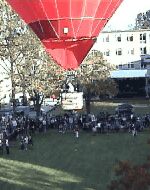
Basic Definitions

Polynomials
| Algebraic Transformations |

Outline

 Factoring Factoring

Factoring Quadratic Polynomials

Factoring Cubic Polynomials

Factor Theorems

Expanding

Completing Perfect Square

Rationalizing Denominators
|

|

|
Expanding is the inverse transformation of factoring.
We need to perform expanding an expression (or some parts of an expression)
in order to simplify the expression or reformulate a problem. In particular,
many integrals are evaluated by expanding the integrands.
Let us consider a few examples.
- If to remove the parentheses in the expression (a
- b)( a + b), then we obtain once
again the formula for the difference between two squares:
(a - b)( a
+ b) = a2
– b2.
- Expanding the expression (a + b)
(a2 –
a b + b2),
we come back to the formula for the sum of two cubes:
(a + b) (a2
– a b + b2)
= a3
+ b3.
- Likewise,
(a – b) (a2
+ a b + b2)
= a3
– b3,
(a ± b)2
= (a2
± 2 a b + b2),
(a + b)3
= (a3
+ 3 a2
b + 3 a b2
+ b3).
- If we represent the below expressions in expanded form and compare
the results with the original forms, then no explanation required.

|
